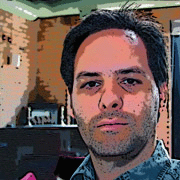Bob Dylan: A Work in Progress
I still want to read Chronicles Vol 1: of course, I've read excerpts.

"Chronicles, Vol. 1" (Bob Dylan)
Anyway, interesting article on Dylan by Nat Hentoff....
WSJ.com - Bob Dylan: A Work in Progress:
Bob Dylan: A Work in Progress By NAT HENTOFF
I first heard Bob Dylan in 1961 at Gerde's Folk City on West Fourth Street in Greenwich Village. He was 19 and wore a leather cap, blue jeans and well-worn desert boots. I was not impressed with his voice, and certainly not with his rather rudimentary guitar playing, but the lyrics to his original songs were intriguing.
....
In our conversations, however, Dylan expressed increasing resistance to being categorized. During a 1964 interview for The New Yorker at a restaurant in the Village, he told me: "I'm not part of no Movement. If I was, I wouldn't be able to do anything else but be in 'the Movement.' I just can't make it with any organization."
Not long before, in the Grand Ballroom of the Americana Hotel in New York, where he was to receive the Tom Paine Award for his civil-rights songs from the Emergency Civil Liberties Committee (which took cases the American Civil Liberties Union would not), Dylan had infuriated the audience by at first rejecting the award because, he told me, he felt no connection with these people "with minks and jewels who had been with the left in the '30s." But he was persuaded to come back and make his speech, which riled them further because he asked what they were doing for his friends in Harlem, "some of them junkies, all of them poor."
As the years went on, Dylan's songs became more personal, sometimes rather surrealistic, and he dealt with continuing fame by being more and more reclusive. The fame began to gradually diminish, but he still went on the road trying, as he has said, to be discovered by a new audience. He still plays more than 100 dates a year because "I don't really feel like anybody else is doing what I do." And the recent publication of his singular memoir, "Chronicles Volume One" (Simon and Schuster), underlined the strong and continuing interest in him by both the once young and the new young.
In one of the many reviews, most of them admiring, Timothy Ferris, in the Los Angeles Times Book Review, noted that the work of the "iconic" Mr. Dylan "is scrutinized in at least 120 books and on 1.5 million websites."
The book, written in a conversational and freewheeling style, reveals more of this intellectually curious and quizzically introspective pilgrim than ever before. Although I knew Dylan reasonably well in his Greenwich Village years, I was unaware, for instance, of the range of his reading then (Robert Graves, Balzac, Chekhov, Milton, Dickens, Gogol, et al.)
Nor was I aware of his acute interest in jazz. He knew the music of Charlie Christian, Fats Navarro, Gil Evans and, he writes, "if I needed to wake up real quick," he put on records by Dizzy Gillespie and Charlie Parker. In jazz clubs, he heard Miles Davis, Cecil Taylor and, one afternoon, he came upon Thelonious Monk, "sitting at the piano all alone." Dylan told Monk he played folk music up the street, and Monk replied, "We all play folk music." (I wonder if Monk knew that Louis Armstrong had said exactly the same thing years before when asked about his music.)more excerpts
"Chronicles" moves in and out of Dylan's journeys, not always chronologically. The kaleidoscopic nature of the book -- full of precisely evocative imagery and many characters as distinctive as his own -- reminded me of lines from T.S. Eliot's "Burnt Norton": "the end precedes the beginning, and the end and the beginning were always there before the beginning and after the end. And all is always now." Now that I know how adventurous Dylan is in his reading, it's possible he's read Eliot; but in any case, he understands -- and lives in -- the rhythms of "Burnt Norton."


0 Comments:
Post a Comment
Links to this post:
Create a Link
<< Home